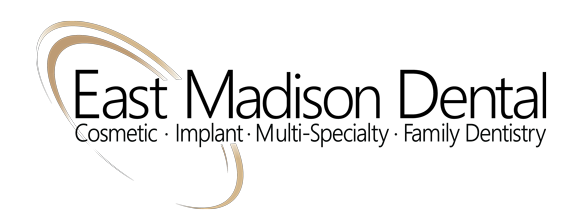If gaps, chips, stains, or misshapen teeth are affecting your smile, East Madison Dental Tenafly has the cosmetic solution you need. Dental veneers allow our team to easily correct dental imperfections to help our patients have a more confident, beautiful smile. Veneers are natural in appearance, and they are a perfect option for patients wanting to make minor adjustments to the look and feel of their smile.
What are Dental Veneers?

Whether you want to correct small flaws, cracks, gaps, or broken teeth, veneers at East Madison Dental are an excellent option for achieving a brighter, whiter, and straighter smile.
If you are struggling with the following imperfections, you could be a great candidate for veneers:
- Receding gums
- Misshapen teeth
- Chipped and broken teeth
- Gap-filled smile
- Discolored and stained teeth
We offer the following dental veneers systems at our Tenafly, NJ dental office:
Porcelain Dental Veneers
Porcelain dental veneers are ultra-durable, long-lasting front teeth covers that are custom-crafted to fit each patient's unique appearance. Unlike other veneers systems, porcelain veneers deliver the most natural-looking results. And, when they are cared for properly, they can last decades!
Composite Dental Veneers
Composite dental veneers deliver similar results as porcelain veneers but come at a more budget-friendly price point. Another advantage of composite veneers is that they require little to no tooth prep. The minimally invasive placement procedure allows our patients to receive their new smile the very same day as their initial treatment!
Trial Smile
To ensure that you get the results you desire, our Tenafly dentists can use digital technology to create a trial smile, a temporary mockup that allows you to have a visual preview of how porcelain veneers will look once permanently bonded to the smile. You'll have the chance to work collaboratively with our team to make any necessary changes to your expected results before treatment even begins!
How Much Do Dental Veneers Cost?

We also accept no-interest and low-interest financing plans that can be used alone or in conjunction with your dental insurance.
Caring For Your Veneers
When your veneers are placed, you’ll be pleased to see that they look like your natural teeth. While veneers are stain-resistant, your cosmetic dentist may recommend that you avoid coffee, tea, red wine, and tobacco to maintain the beauty of your new smile.
Your Veneers Consultation
Find out if dental veneers are right for you with your veneers consultation! Contact us today to schedule your visit.
